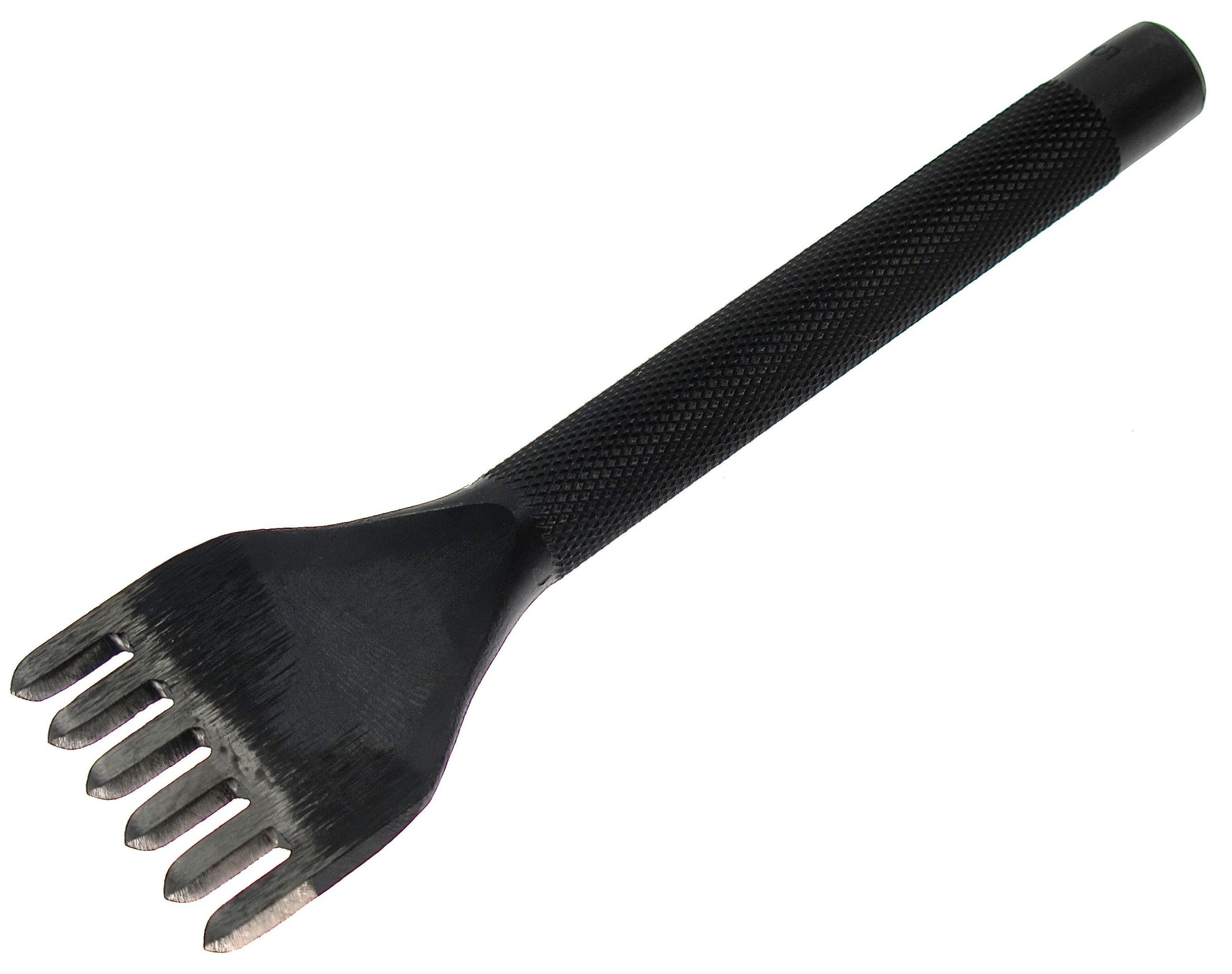It took me far to long to realize that these two tools were not the same tool. Yes, pricking irons are more than just the expensive version of chisels. These two tools are used in a different ways even though they are both stitching aids.
Chisel:
This tool is meant to create holes for your stitching. When used, it needs to be punched all the way through the leather.
Pricking Iron:
This tool creates a guide that you later use when creating holes with an awl. The name is pretty appropriate. You’re not punching the iron through the leather, but only pricking the leather, leaving a mark on the surface of the leather.
So there’s both tools with their intended purpose, but it doesn’t seem like there is a consensus on which is better in the leatherworking community.
Here’s a pro/con list to help you decide which tool is right for you.
Chisel Review:
+ Cheap and Replaceable. I bought my set of chisels from leathercrafttools.com for a little over $30. I’ve had them for awhile and they are still working great. But, say I did drop one and chip off a tooth, $30 isn’t enough to send me into a panic.
+ Quick. This is also something that is debated. For me, using a chisel has always been quicker, but some say that they can use a pricking iron and awl with greater speed. I don’t doubt them, I just can’t. When using gussets on a design, I can definitely see this being the case.
+ Easy to Learn. It doesn’t take long to figure a chisel out. Set it in your stitching grove, make sure it’s sitting straight, and hammer. It’s pretty easy.
- Cheap. As I mentioned earlier, chisels aren’t meant to last as long as pricking irons.
- Doesn’t Develop Skill with an Awl. This is really the worst part about it in my opinion. Like I mentioned with the gussets, there are just times that you need to use an awl. When you’re using a chisel, you won’t be getting much practice with an awl. I really suggest using a chisel on the work you are selling, while using an awl on pieces that you don’t plan on selling. You need the practice. Don’t let a chisel be a crutch.
Pricking Iron Review:
+ Durable. Pricking Irons are usually hand made and seldom need replaced. It’s a one time purchase.
+ More Controlled. I’ve heard this argued before, but will be honest and say that I am not 100% sold on this. The argument is that if you make a mistake with a chisel you’ve made a mistake all the way through the leather. With a pricking iron (and awl), you individually create each hole. I think the assumption is that one hole at a time gets more care than the six you make at a time with a chisel. I mess up with my awl way more than I do with my chisel though.
+ Looks Good in Your Instagram Posts. This is a running joke on the leather craft reddit, because pricking irons seem to find their way into the back ground of a lot of pictures… but they do look good. Go check out the subreddit if you haven’t already. I owe thanks to many people there for all they’ve taught me.
+ Develops a Skill. You can’t get around using an awl with a pricking iron, and that’s a good thing. For those who can use a pricking iron/awl really well (not me), there’s definitely a sense of pride and accomplishment that they have about it, and I don’t blame them.
- Expensive. Pricking irons are going to cost you about $200. That’s a lot for me.
My Verdict:
You’ve probably guessed by now, I don’t think pricking irons are worth it. But as I get more experience maybe that will change. I really respect people who can use a pricking iron well, but for the price I don’t suggest it, especially people who are new to the craft. As I mentioned, I got my chisel set for $30, they still work great, and I don’t think I will need to be replacing them any time soon. When I started using a chisel my stitching looked drastically better because the holes were consistent as opposed to the holes created by my mediocre awl skills.
If you’re new get the chisels, but make sure to practice with the awl on the side. If you really want a pricking iron, get some skill with the awl. Once you’ve got some skill, I say go for it.
Oh yeah, the overstitch wheel probably deserves mention because it serves a similar purpose. But then again… it doesn’t. I hate the thing.
Let me know if I missed a pro or con for either of these… or if I’ve horribly offended you because of your overstitch wheel love.









